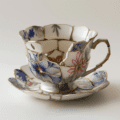Wounded soul: when the body becomes a stage for pain.
- Wounded soul: when the body becomes a stage for pain.
- I. Introduction.
- II. Understanding self-image.
- Self-image: definition.
- Negative self-image
- III Understanding body-image.
- Body-image: definition
- Negative body-image.
- Perfectionism.
- Body dysmorphia.
- Sexuality.
- IV. Strategies to improve self-image and body-image: body-image and the journey to self-love and acceptance.
- Dealing with the Inner Critic
- Grounding:
- Thought-stopping:
- Imagination exercises:
- Rage:
- Disgust:
- Grief:
- Dialogue:
- Self-care:
- Self-compassion:
- Tips:
- V. Conclusion.
I. Introduction.
Moods affect not only how we feel, but also how we perceive the world and ourselves. For many who have experienced childhood trauma, self-perception means a constant struggle with a negative self-image and body-image.
Childhood trauma can significantly affect a person’s self and body-image. Children internalize neglect, abuse, or violence as overwhelming and self-inflicted because they cannot critically assess the overbearing parental figures. Children cannot even imagine “evil” parents; babies and young children would not have words for it. The result is a “trauma identity” with toxic feelings of shame, guilt and worthlessness, embodied in an overpowering Inner Critic and an individual pattern of unconscious trauma reactions with a protective function – the 4 F’s. Especially, the feeling of being unlovable is turning into a negative self-image and a distorted body perception. For example, a child constantly criticized for their appearance may develop a distorted body-image and display disturbed eating behaviour to console themselves. Similarly, childhood trauma can contribute to developing complex post-traumatic stress disorder (cPTSD) with symptoms such as low self-esteem, negative self-talk and difficulty regulating emotions.
II. Understanding self-image.
Self-image: definition.
Self-image refers to the perception and evaluation of oneself based on experiences and relationships throughout life. It includes self-perception’s cognitive and emotional aspects and reflects how we see, evaluate, and feel about ourselves. Self-image is crucial as it significantly influences how we behave, make decisions and form relationships with others.
Self-image is shaped and influenced by numerous factors, including upbringing, media and societal expectations. In upbringing, parents and other caregivers mainly play a vital role in developing self-image. Through their upbringing and behaviour, they can contribute to the child developing a positive or negative self-image. The media can also significantly influence self-image by presenting certain beauty ideals and norms. Societal expectations regarding gender roles, education, job, and career can also affect self-image.
Negative self-image
Childhood trauma leads to the described negative self-perception into adulthood: the Inner Critic leads to permanent self-criticism, self-doubt and self-sabotage. Dealing with these problems through therapy and self-reflection can help those affected to develop a healthier self-image.
A negative self-image can lead to a range of mental health issues. People with a negative self-image can suffer from depression, anxiety, low self-esteem and social isolation. They often have difficulty accepting themselves and building positive relationships with others. Therefore, it is vital to develop and maintain a positive self-image. Positive self-perception will grow with self-reflection, psychotherapy and positive relationships with others.
III Understanding body-image.
Body-image: definition
Body-image refers to the perception and evaluation of one’s own body. It encompasses body perception’s physical and emotional aspects and reflects how we see, feel, and evaluate ourselves. The body not only determines our appearance but also our sense of self and is the bearer of health, illness, or the stage for physical and emotional pain. It carries the body’s memories and pain, as well as the experience of alienation, depersonalization or even loss of function, up to the feeling of paralysis, powerlessness or extreme tiredness, with uncontrollable stress reactions and acting out. Those affected by childhood trauma can often feel stress directly in the body before they can perceive and classify it mentally.
Body-image is, therefore, of great importance because it significantly influences how we feel, behave, and present ourselves to others.
Like self-image, body-image is also shaped and influenced by various influences. Media can convey an unrealistic ideal of beauty that makes people dissatisfied with their bodies. Cultural differences can also lead to people having different ideas of an “ideal” body. Peer and social pressure can also influence body-image by causing people to adopt certain behaviours to be accepted in the group.
Negative body-image.
Perfectionism.
Perfectionism can be a severe problem for emotionally neglected people in childhood. On the one hand, it offers them a way to gain control in a world that makes them feel powerless and insignificant. By striving for perfection, they have a goal and a sense of self-control. Perfectionism, therefore, belongs in the Inner Critic’s arsenal and the 4 F’s, either as a reassurance against the fear of rejection in escape and submission patterns or a sense of control in the attack response.
But perfectionism also has a flip side. If the pursuit of perfection fails repeatedly and a sustainable attachment is not found, the perception of imperfection can lead to shame and fear. Self-hatred and self-loathing can result in a vicious circle of fear and shame, and encrusted neglect. Thus, not only can a child who has experienced sexual abuse develop a negative body-image and learn to hate their body as a source of shame and disgust. These distorted perceptions can lead to eating disorders and other psychological problems.
Body dysmorphia.
Body dysmorphia (also called dysmorphophobia or dysmorphic disorder) is a mental disorder in which people worry about a perceived or actual imperfection in their appearance. This imperfection may affect a specific body feature or part, or it may relate to the body’s overall appearance. In addition to childhood trauma, the disorder can be caused by genetic, psychological and social factors.
People with body dysmorphia often have unrealistic or exaggerated ideas about their appearance and hate their bodies. This dissatisfaction leads to significant impairment of daily life, social isolation, and depressive symptoms. Affected people may sometimes try to solve the perceived problem with cosmetic surgery, but often this does not bring lasting relief and may worsen the difficulty. Other attempts to correct the body include eating disorders, either with food restriction and extreme exercise or binge eating – for comfort or even self-punishment – followed by deep despair, guilt, and self-loathing. Therefore, early diagnosis and treatment by a qualified therapist are crucial to help sufferers improve their body-image and self-esteem. Understanding and working through the underlying trauma, the Inner Critic and one’s own 4 F’s is the basis for building and maintaining a positive body-image through self-reflection, positive self-talk, body acceptance and healthy eating and exercise. By acknowledging and accepting their body, people can build a more benevolent, healthy relationship with themselves and give themselves permission to feel comfortable, cared for or erotically attractive in the first place.
Sexuality.
Body dysmorphic disorder can lead to sexual dysfunction in both men and women. According to the ICD-10 classification, these disorders may be listed under something like F52.0 (sexual dysfunction not caused by an organic disorder or disease). Affected persons with body dysmorphia may experience inhibitions in sexual activities and therefore focus on sex when high on drugs, a specific body part or a fetish. Similarly, body dysmorphia can also result in sexual listlessness or erectile dysfunction because sufferers feel insecure or unattractive, making it difficult to feel sexual pleasure or reach orgasm.
There is also a link between body dysmorphia and sex addiction. Sexual dysfunction then leads to excessive sexual behaviour as sufferers try to shore up and improve their self-esteem and cover up the perception of their physical imperfections through sexual activity. People with body dysmorphia and sexual dysfunction or sex addiction must seek professional help to address their problems. Early diagnosis and therapy by qualified therapists can help improve quality of life and strengthen self-esteem.
People with body dysmorphia and sexual dysfunction or sex addiction must seek professional help to address their problems. Early diagnosis and therapy by qualified therapists can help improve quality of life and strengthen self-esteem.
IV. Strategies to improve self-image and body-image: body-image and the journey to self-love and acceptance.
It is essential to understand that perfectionism is not the solution to the emotional wounds of our childhood. It can otherwise lead to a lifelong struggle and affect well-being and relationships. We must allow ourselves to be imperfect and accept our flaws and weaknesses. Self-acceptance and self-compassion are key to overcoming perfectionism and restoring a healthy self-image.
Healing from childhood trauma and its impact on self-image and body-image must be based on the realization that trauma can influence every aspect of life, including self-image and body-image. Trauma victims need a safe and supportive environment to explore their feelings and experiences. That can be done using various methods such as talk therapy, body therapy and mindfulness-based practices that help trauma victims develop a more positive and compassionate relationship with their body and sense of self. Further, trauma therapy recognizes the role of attachment and relationship patterns in shaping self-image and body-image and aims to promote healthy attachments and relationships with others.
For people with complex post-traumatic stress disorder (cPTSD), the journey to self-love and acceptance can be challenging. The pervasive sense of shame and self-blame interferes with their ability to feel worthy of love and acceptance and to enjoy the physical closeness. Similarly, symptoms such as dissociation and emotional dysregulation can make it challenging to get in touch with themselves and healthily regulate feelings.
Dealing with the Inner Critic
If you suffer from the critical Inner Critic, you should understand how profound its negative impact on your mental health can be. Even if you have overcome perfectionism, you may still suffer from the destructive thoughts, images, and feelings that your Critic generates. Even if you have already challenged some obvious perfectionist thoughts, addressing the Critic’s habit of flooding your psyche with anxiety is essential. When an inner critic has dominated since childhood, it does not easily give up its dominance in the mind.
But there is hope. It is possible to detach from the Inner Critic and minimize its profound adverse effects. But to do so, you must learn to stop processing your Critic’s head cinema into full-length movies of impending doom through total abandonment, public humiliation, terminal illness, destitute homelessness, etc. Understanding your Inner Critic will help you deal with it better, so you can even call it a “horror film producer” or a “terrorist” to disempower its negative power.
Learning to deal with and detach from the Critic is indispensable to achieving a healthy self-image and better mental health. Some therapies and techniques can help you break free from the Critic and better control your thoughts and feelings. You need to allow yourself to be imperfect and develop self-compassion to defeat the Critic and live a happier and more fulfilling life.
Here is some advice for sufferers to defeat their inner Critic.
Grounding:
It is critical to remember that your parents gave you harmful messages that may still be bothering you today. However, you are an adult and controlling your thoughts and feelings. Keep telling yourself that you are no longer living in the past but in the “here and now” and will not allow the Critic to dominate you.
Thought-stopping:
Thought-stopping is another essential tool to help the Critic stop working. Try to replace negative thoughts with positive thoughts immediately to prevent them from getting out of control and leading to a downward spiral. Furthermore, create a list of your positive qualities and achievements that you can repeatedly recite to release the amnesia about your worth and the goodness within you.
Replacing negative thoughts with positive ones can create a new and more helpful “muscle” and make the psyche constantly more user-friendly. It is critical to immediately confront negative messages and processes from the Critic with positive ones to avoid falling into a downward spiral of shame, fear, and self-abandonment. A list of positive qualities and achievements you have acquired and memorized can also help resolve the amnesia that flashbacks often cause. If you have little or nothing to put on the list, ask friends for advice, or get support from your therapist.
Imagination exercises:
Positive imagining can help stop the Critic’s perfectionist and anxious processes. Remember past successes and achievements, or imagine safe and loving places and friends. You can also use guided meditations to learn how to use positive imagery.
Rage:
An essential component of healing in complex PTSD is regaining the anger and fight response that traumatized parents typically suppress. Use your anger to stop the Critic and overcome the various self-attack dynamics they use to force perfectionism. It is irreplaceable to stop the Critic’s outdated cognitions based on fear and shame. Use phrases like “I am no longer afraid of you, mum and dad …. Critic. I am in an adult body now, and I will not let you hurt me.” Finally, when the Critic attacks you, I encourage you to learn to shout “No!” and “Shut up!” inwardly or in real life.
Disgust:
Disgust is another valuable tool to fight back against the Inner Critic. You can allow yourself to feel disgusted at the image of your parents, who bullied and overwhelmed you with shame when you were so defenceless. The disgust you feel today frequently comes from the disgust you endured as a child. You can return the shame by transferring the anger at the Critic’s accusations outward and away from you to the perpetrators of the unfair criticism or the Inner Critic himself.
Grief:
Working through grief over losses in your childhood can help you release painful feelings of fear, shame, and depression that fuel the Critic. Note that this process is not easy and takes time. Your therapist can help you go through this process step by step.
Dialogue:
There is also the seemingly odd option of embracing and talking to the Critic, as described in the books “Embracing The Inner Critic”, by Stone and Stone or “Soul Without Shame”, by Brown. But these left-brain cognitive approaches are often of limited use unless backed up by an emotional, right-brain attitude of aggressive self-protection. The inner Critic’s processes are so emotionally charged and identification with him so dominant that efforts to resist him rationally and dispassionately may fail ineffectively. So, it is essential to focus on developing a healthy self-protection mechanism.
It can be challenging to break old thinking patterns and establish new ways of thinking, but it is possible. Setbacks are normal and part of the growth process. When the Inner Critic strikes again, never give up but look back and see how far you have come instead.
This growth is often infinitely slow and unrecognizable at first, and it requires a lifetime of activity to stop noticing exclusively what is wrong and what is bad. But with much encouragement and practice, one can learn to reject one’s imprint of self-abuse and self-sacrifice and develop one’s sense of healthy self-protection. That will help stop unfair criticism – whether from within or without.
An essential part of this growth is working through the compulsion to repeat. That is the only way to eliminate the terrible legacy of parents who taught you that love means callously accepting abuse and neglect. Ultimately, it is about building a new relationship with yourself, one based on compassion, acceptance and self-love. It is about recognizing your value, regardless of what the Inner Critic wants you to believe. By allowing yourself weaknesses and mistakes, you can disempower the Inner Critic and regain control over your life.
Overall, there are many ways to dismantle the Inner Critic and live a life of self-love, compassion and acceptance.
Self-care:
Self-care is an essential strategy for developing a positive body-image. That means taking time to nurture and pamper yourself, whether through a massage, a relaxing bath or a good book. A healthy lifestyle, including a balanced diet and regular exercise, can also help to increase well-being and improve body-image. Setting realistic goals and focusing on progress and achievements is also essential rather than fixating on perceived imperfections. Surrounding yourself with positive influences such as inspiring people and positive social networks can also help to strengthen your self-image.
Self-compassion:
Another critical strategy for improving self-image and body-image is self-compassion. That means treating yourself with the same kindness and empathy you show others. Instead of berating or judging themselves, sufferers should learn to accept and love themselves as they are. We are all good enough at being ourselves. That does not mean that there is no room for improvement. But the way each of us is at the moment, we are – given our lives so far – the best possible version of ourselves. We are good enough. Self-compassion can be fostered through various exercises and techniques, such as writing letters to oneself, mindfulness, journaling, positive self-talk and affirmations. In addition, building a solid support system of trusted friends and family members will help sufferers feel validated and cared for on their path to personal growth.
Various professional resources are available for people struggling with self- and body-image issues. These include psychotherapeutic approaches such as psychodynamic trauma therapy, cognitive behavioural therapy, dialectical behavioural therapy (DBT) and mentalization-based therapy (MBT), as well as support groups and online resources. Be clear about your needs and circumstances and choose your best strategy.
Tips:
- If you constantly feel tense or anxious in public, it may be due to a negative body or self-image.
- Focus on your body and thoughts, and make time for self-care, such as regular physical activity or relaxation exercises.
- If you find yourself in an emotional situation that overwhelms you, try to breathe consciously or feel a touch to bring your thoughts and feelings back into balance, e.g., thought-stopping, REST and breathing exercises.
- Be mindful of your sleeping habits and maintain a regular sleep pattern to promote physical and emotional health. Avoid being influenced by external factors such as your partner’s sleep habits or societal expectations, and focus on what is best for you and your body.
- If you have difficulty sleeping, try to consciously address your fears and worries and understand them to overcome them.
- Build a routine to help your body and mind adjust to balance.
- Consider how your diet or eating patterns affect your well-being and, if necessary, see a psychotherapist, nutritionist, or doctor to optimize your diet.
- 8. Allow yourself to process your emotions and understand that dreams help us process and understand our experiences.
- 9. Accept your situation and try to focus on the reality of your life.
- 10. Be gentle with yourself and allow yourself to make mistakes and grow.

V. Conclusion.
Body-image plays a vital role in our overall well-being, and it influences our thoughts, feelings and behaviours and can lead to mental health problems if negatively distorted. Therefore, we must know the importance of self-image and body-image and find strategies to improve them. Also, remember that physical and emotional health are interconnected and that you may need professional support to enhance your self- and body-image.
Like improving your body-image, personal growth after childhood trauma is a lifelong process. Every step towards self-love and acceptance is the right step.
Giving space to self-care and self-acceptance in our daily lives requires courage. Learn to approach yourself with kindness and empathy and focus on your strengths and successes rather than your inner Critic’s voice and perceived imperfections. Ultimately, do not be afraid to seek the help you need to build a positive self- and body-image.
Sources:
Martin, L. (2020). The Book of Moods: How I Turned My Worst Emotions Into My Best Life. Hachette UK.
Sack, M. (2010). Schonende Traumatherapie: Ressourcenorientierte Behandlung von Traumafolgestörungen. Schattauer.
Walker, P. (2013). Complex PTSD: From Surviving to Thriving: A Guide and Map for Recovering from Childhood Trauma. Createspace Independent Publishing Platform.
Walker, P. (2015). The Tao of Fully Feeling: Harvesting Forgiveness Out of Blame. Createspace Independent Publishing Platform.






